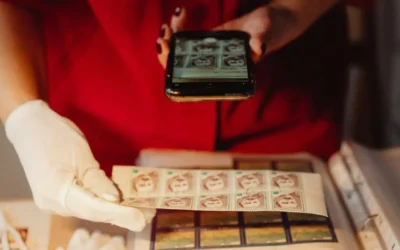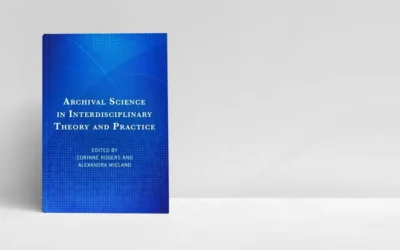Artist-Driven Archives
Margot Note
Archivists organize collections through appraisal, accessioning, processing, and preserving the materials. The goal is to provide access to the materials.
Collections arise out of an organization’s operations which are no longer in use and will not undergo further intentional modification other than preservation once they have been accessioned.
In the case of archives created by artists, the materials may include film or video documentation, photographs, programs, newspaper clippings, oral histories, sketches, musical scores, correspondence, rehearsal notes, budgets, and other items. Archivists endeavor to preserve the provenance and original order of the materials. While archival professionals gather these records as part of the appraisal and accessioning process, they are not typically collected to create a specific story. Instead, the goal is to create a consistent structure across collections within a particular archive that enables uniform searching.
Creative Archives
A growing trend among creators is to create artist-driven archives as part of their artistic work. Like performance projects, artist-driven archives highlight how creators have a history of turning to archives (their own or others’) for inspiration. Artist-driven archives result from an ongoing creative process. They differ from traditional archives because the materials are still in active use by the individuals who generated them, and they may shift over time rather than being preserved in their original order. Such archives collect materials related to a single artist’s work, either as a whole or focusing on one era or specific project. Of importance to this approach is that the materials are about the artist’s self-representation. Primarily, the artist-driven archives aim to articulate something about an artist’s ongoing body of work and artistic process rather than enabling the preservation of materials. Artist-driven archives delineate the unique possibilities of each creator’s body of work, even as the various components of the archives may also exist as artworks. Indeed, when artists engage with their archival materials, they can choose the form their archives take, which gives their archives a consistency with their creative practices.
Present vs. Future
In addition to providing artists with new methods to articulate their practice, artist-driven archives are also aimed at being accessible to broad audiences in the present, rather than existing primarily for research in the future. Artist-driven archives are intended to expand the accessibility of the work to new audiences. The premium placed on accessibility means that these artist-driven archives employ digital, online, and innovative platforms; museum and gallery exhibitions and installations; and live performances, rather than a repository model. Archival users can learn something about the art when it was first created, but they may also experience the artistic process or even experiment with creating their mix of the materials, even as the artist is engaged in the same process. This approach brings users into the art-making process in ways that are not generally available to them.
Coexistence of Traditional and Creative Archives
Whereas repositories control access to materials and dictate how they may be handled with the goal of long-term preservation, the artists creating artist-driven archives specifically seek to expand access to as many people as possible. However, artist-driven archives are not replacements for traditional repositories. Indeed, the latter will continue to play a significant role in scholarship. Instead, artist-driven archives offer further opportunities for audiences, researchers, and even the artists themselves to engage with the work in new ways. While traditional archival practices are not as experimental or fluid as artist-driven archives, archivists in all settings can learn from creators who push the boundaries of archival innovation, access, and outreach.
Margot Note
Margot Note, archivist, consultant, and Lucidea Press author is a regular blogger, and popular webinar presenter for Lucidea, provider of ArchivEra, archival collections management software for today’s challenges and tomorrow’s opportunities. Read more of Margot’s posts here.
Never miss another post. Subscribe today!
Similar Posts
Ensuring Long-Term Access to Digital Archives
Long-term preservation is essential to ensure digital archives remain accessible and usable.
5 Best Practices for Personal Digital Archiving
Archivists have developed best practices for organizing and maintaining personal digital archives, safeguarding digital legacies for future generations.
Interview with the Editors: Wieland and Rogers on Interdisciplinary Archival Science
Alexandra Wieland and Corinne Rogers co-edited Archival Science in Interdisciplinary Theory and Practice. My interview with them is below.
The Importance of Personal Digital Archiving (Plus Steps to Get Started)
Archivists often help individuals manage and preserve digital files of personal significance.




Leave a Comment
Comments are reviewed and must adhere to our comments policy.
0 Comments